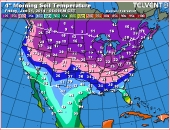





 7
7




List of Bryant RedHawk's Epic Soil Series Threads We love visitors, that's why we live in a secluded cabin deep in the woods. "Buzzard's Roost (Asnikiye Heca) Farm." Promoting permaculture to save our planet.




 2
2




Growing on my small acre in SW USA; Fruit/Nut trees w/ annuals, Chickens, lamb, pigs; rabbits and in-laws onto property soon.
Long term goal - chairmaker, luthier, and stay-at-home farm dad. Check out my music! https://www.youtube.com/@Dustyandtheroadrunners
 6
6




Growing on my small acre in SW USA; Fruit/Nut trees w/ annuals, Chickens, lamb, pigs; rabbits and in-laws onto property soon.
Long term goal - chairmaker, luthier, and stay-at-home farm dad. Check out my music! https://www.youtube.com/@Dustyandtheroadrunners
 8
8




Sometimes the answer is nothing













 6
6




Enrique Garcia wrote:"kitchen scraps ... add some red wiggler worms"
That is my usual cheapest method but not fastest.
Have you got great & immediate results using this method ?
List of Bryant RedHawk's Epic Soil Series Threads We love visitors, that's why we live in a secluded cabin deep in the woods. "Buzzard's Roost (Asnikiye Heca) Farm." Promoting permaculture to save our planet.
 4
4




Standing on the shoulders of giants. Giants with dirt under their nails
 3
3




 5
5




Bryant RedHawk wrote:hau Kola Nicole, In this case I would put down the paper sacks over a spreading of compost and duck bedding, then I would cut X's to plant the corn seeds through the sacks, lay on mulch leaving the seed holes uncovered so the seeds can come up through the paper X then you could mulch closer to the new corn plants.
This will give some good microbes the chance to establish under the sacks and hold moisture in place. I would not bother trying to dig the area, just where you want to plant the seeds.
Water the first few times with water then make a tea and use that, (to really boost the microbes use tea once a month and maybe one or two waterings with mushroom slurry.
Redhawk
 7
7




It's never too late to start! I retired to homestead on the slopes of Mauna Loa, an active volcano. I relate snippets of my endeavor on my blog : www.kaufarmer.blogspot.com





 2
2




Argue for your limitations and they are yours forever.






 5
5




It's never too late to start! I retired to homestead on the slopes of Mauna Loa, an active volcano. I relate snippets of my endeavor on my blog : www.kaufarmer.blogspot.com
 1
1




Genevieve Higgs wrote:Does anyone have experience with urine over top of wood chips for getting a fast/cheap/easy/no big pitfalls start to a garden?
On the topic of easy/cheap/maybe better than nothing, has anyone tried collecting the left over charred remains of beach bon-fires to throw in the compost as "lazy person's biochar"?
Standing on the shoulders of giants. Giants with dirt under their nails












 3
3




Enrique Garcia wrote:Thanks Redhawk !
Someone suggested steer manure at $1.50 a bag + Wood chips + Worms .. any experience with this ?
List of Bryant RedHawk's Epic Soil Series Threads We love visitors, that's why we live in a secluded cabin deep in the woods. "Buzzard's Roost (Asnikiye Heca) Farm." Promoting permaculture to save our planet.
 3
3




 1
1




Community Building 2.0: ask me about drL, the rotational-mob-grazing format for human interactions.
 1
1









Hans Albert Quistorff, LMT projects on permies Hans Massage Qberry Farm magnet therapy gmail hquistorff
 1
1




This is all just my opinion based on a flawed memory





Enrique Garcia wrote:I got a Community Garden with no money I gotta repair soil as fast & as cheap as possible to start growing yesterday !
I know more expensive methods both time wise & monetarily speaking $$$ but how fast & cheap can we go




 2
2










 1
1




It's never too late to start! I retired to homestead on the slopes of Mauna Loa, an active volcano. I relate snippets of my endeavor on my blog : www.kaufarmer.blogspot.com




Some places need to be wild

|
Let your freak flag fly. Mine is this tiny ad on my clothes line.
the permaculture bootcamp in winter (plus half-assed holidays)
https://permies.com/t/149839/permaculture-projects/permaculture-bootcamp-winter-assed-holidays
|


